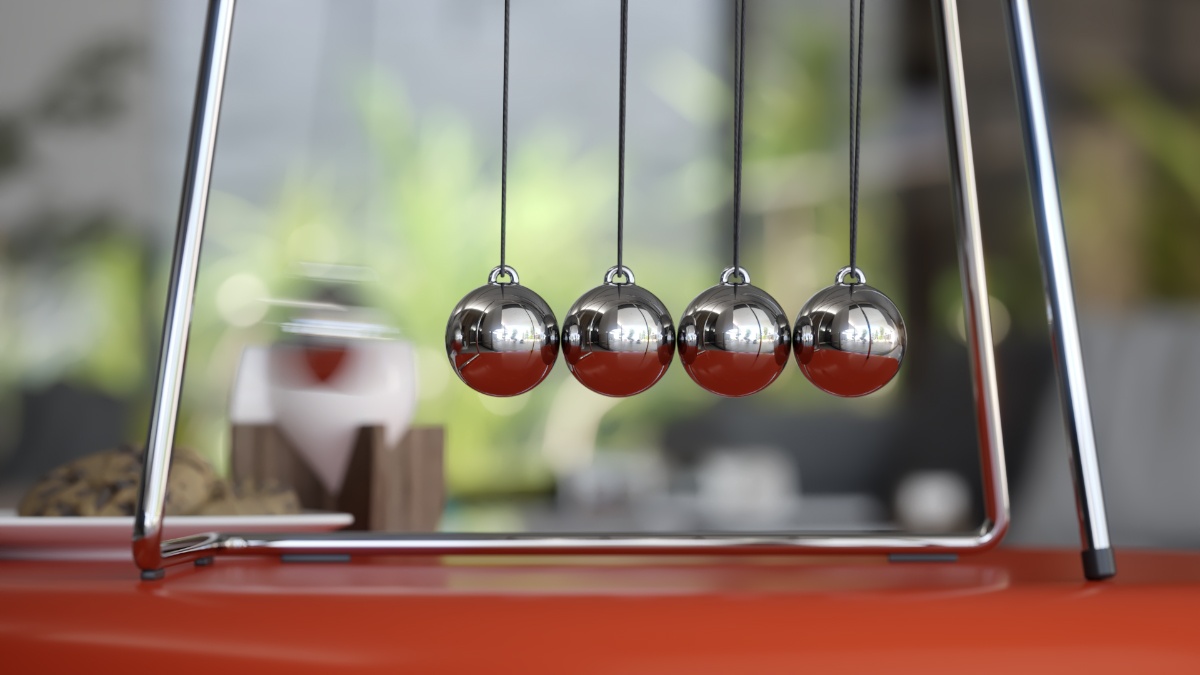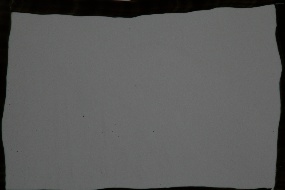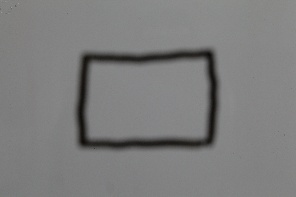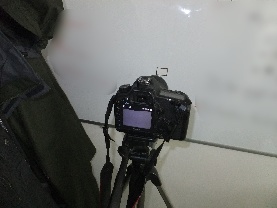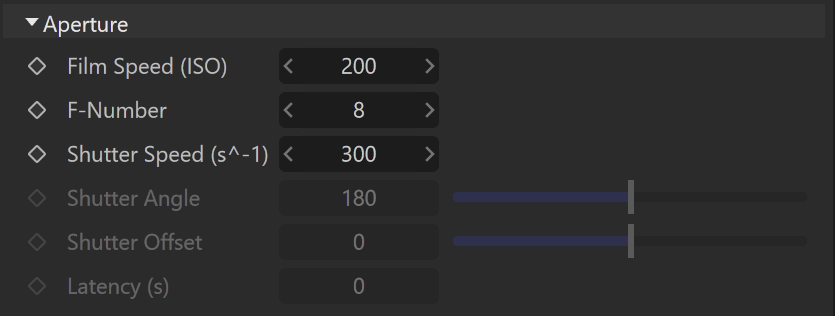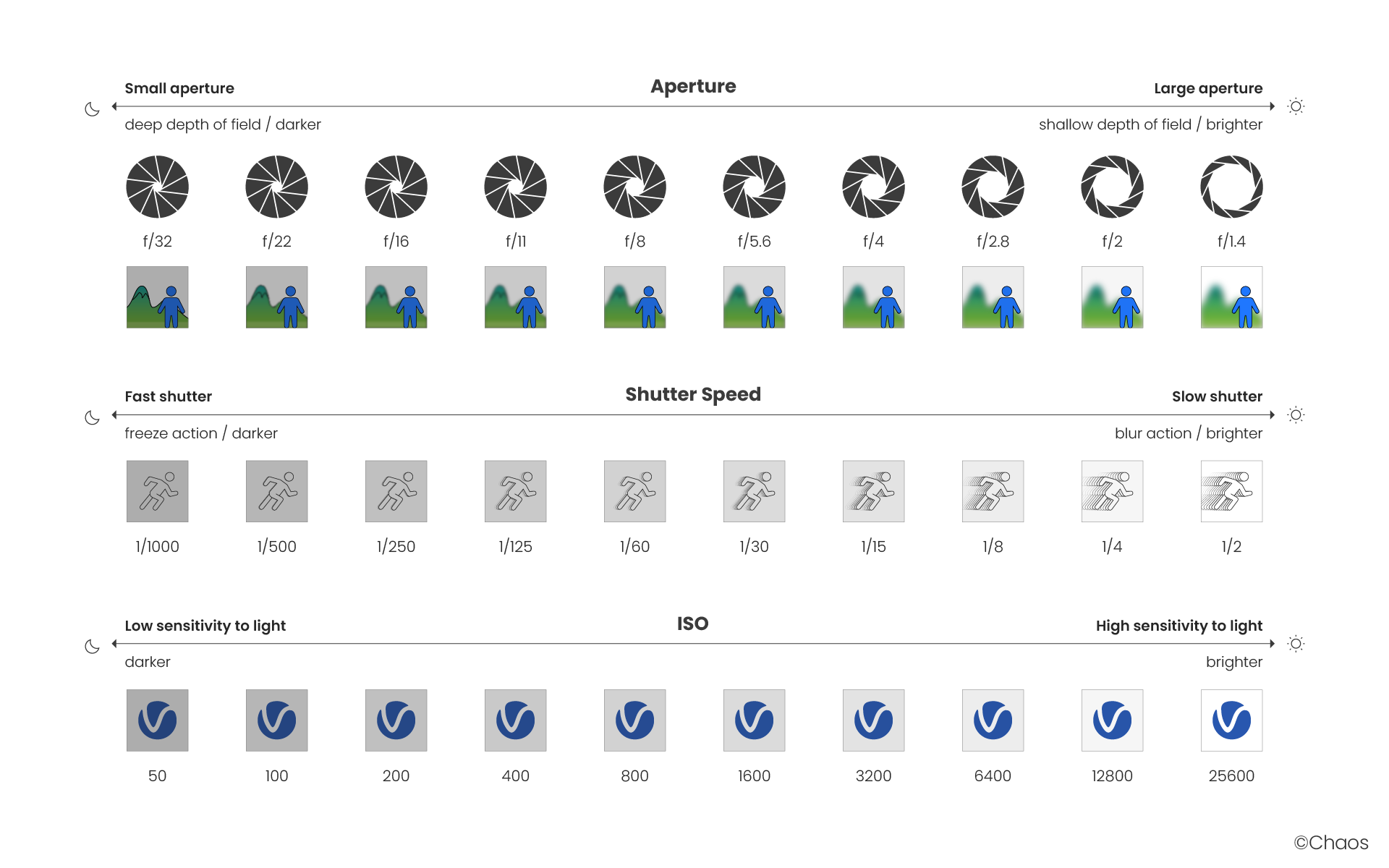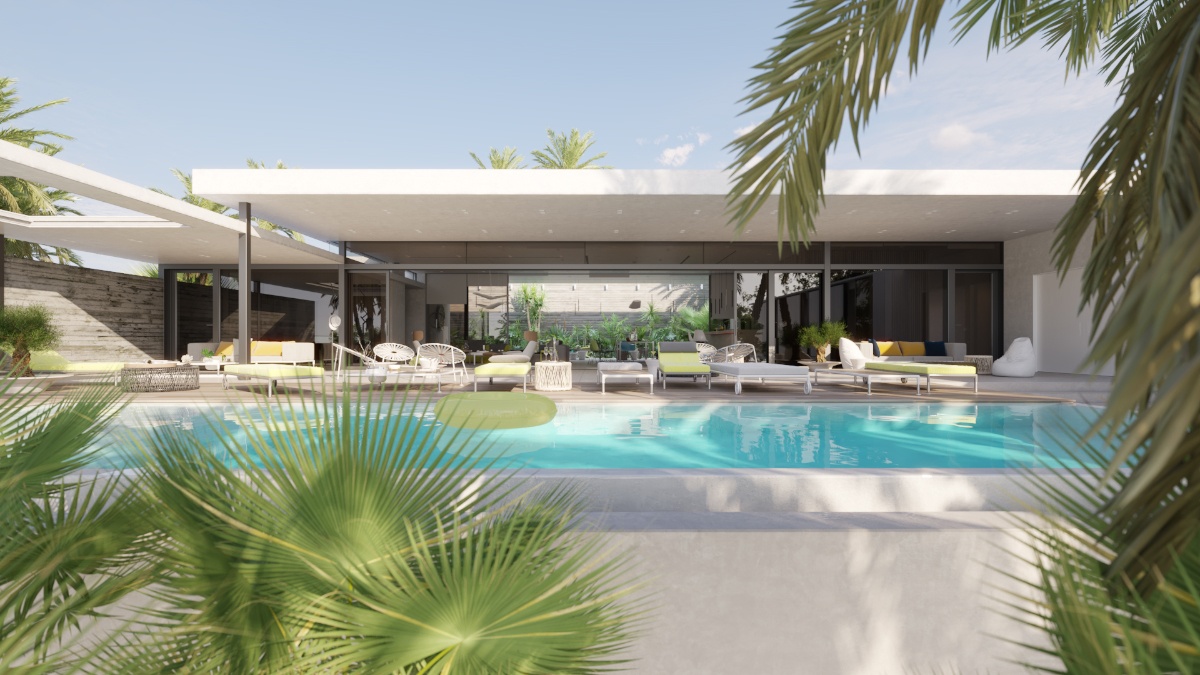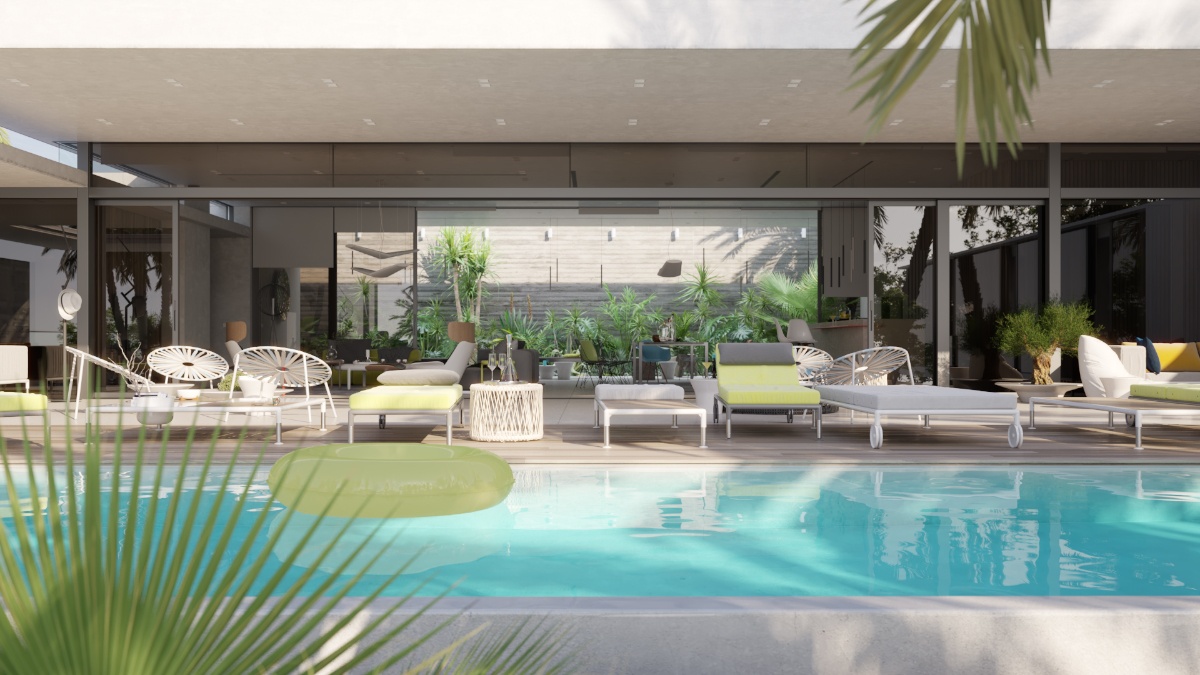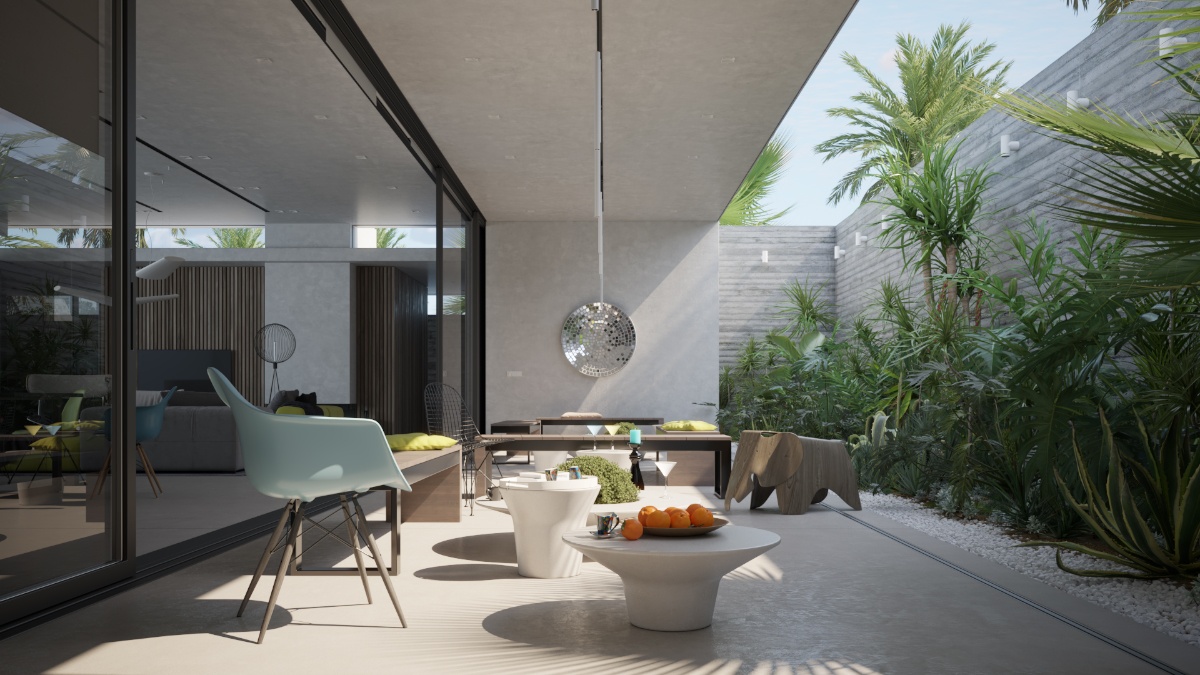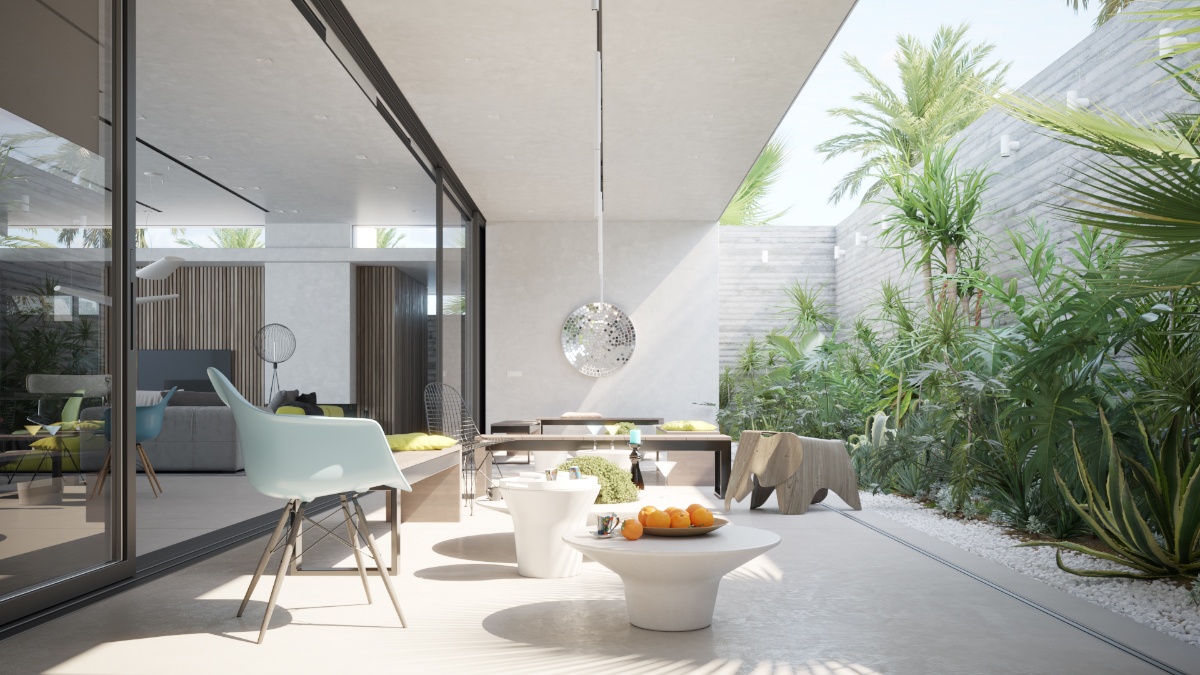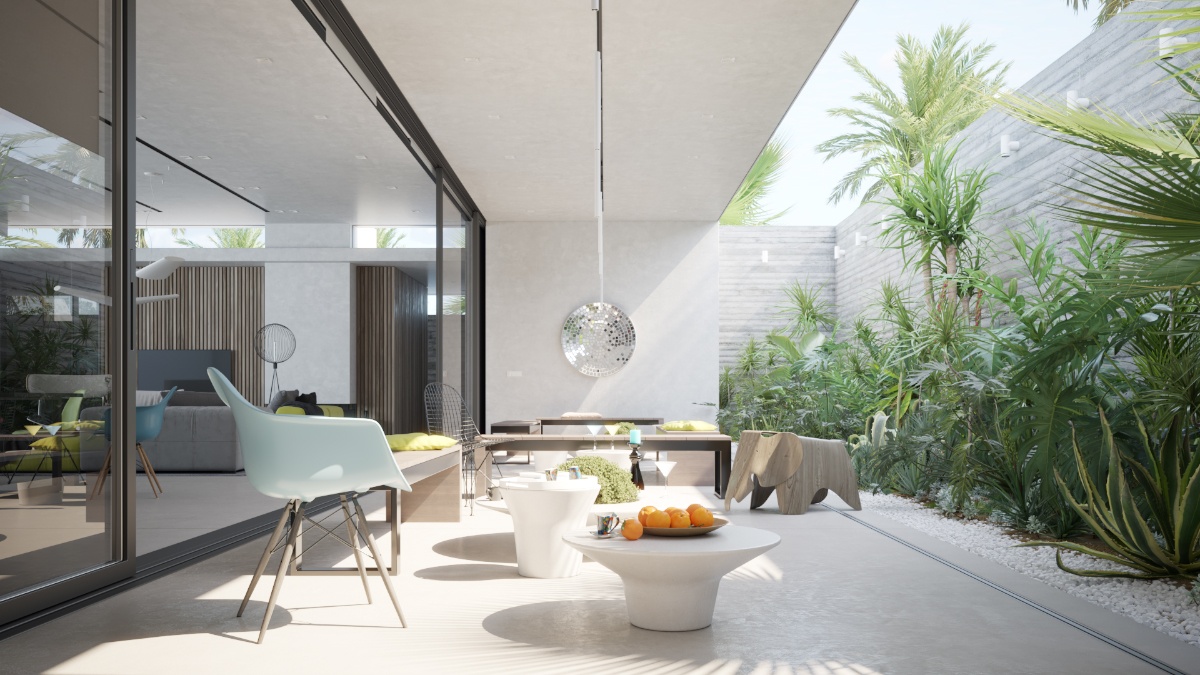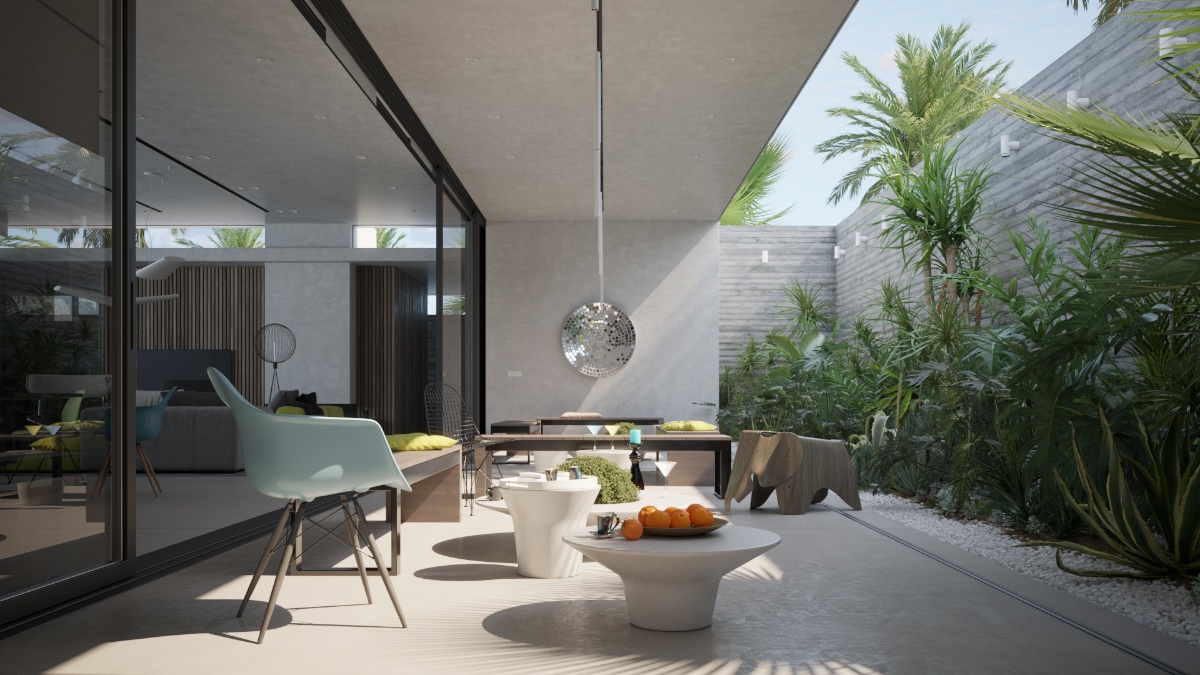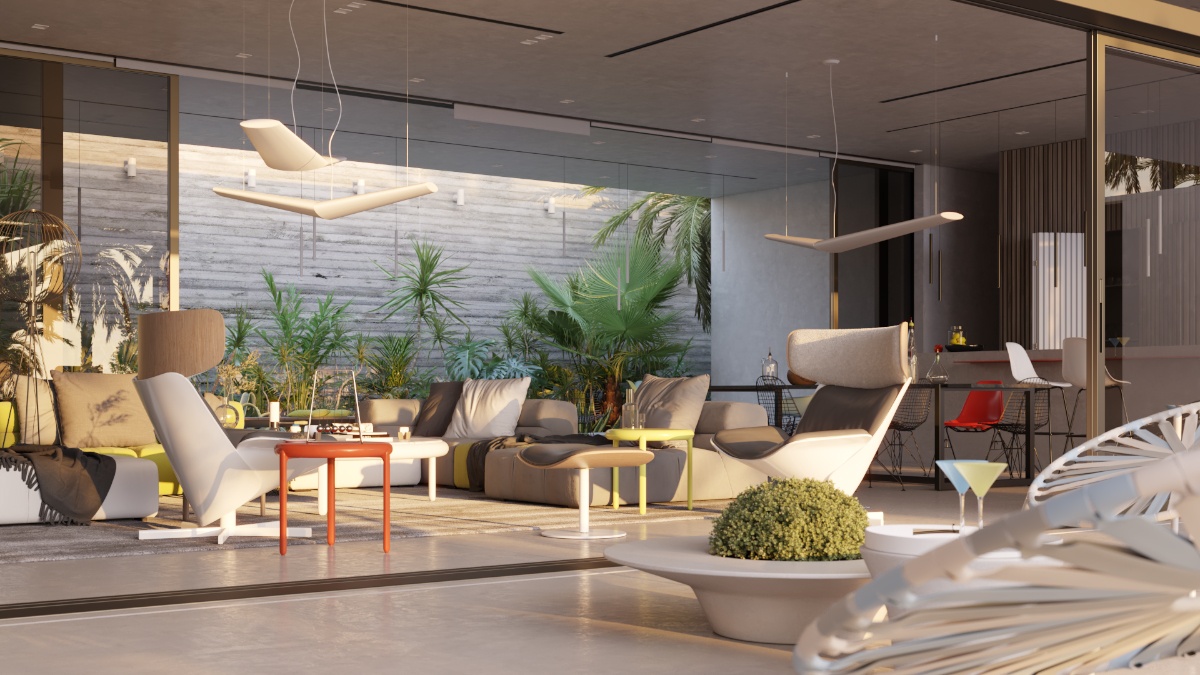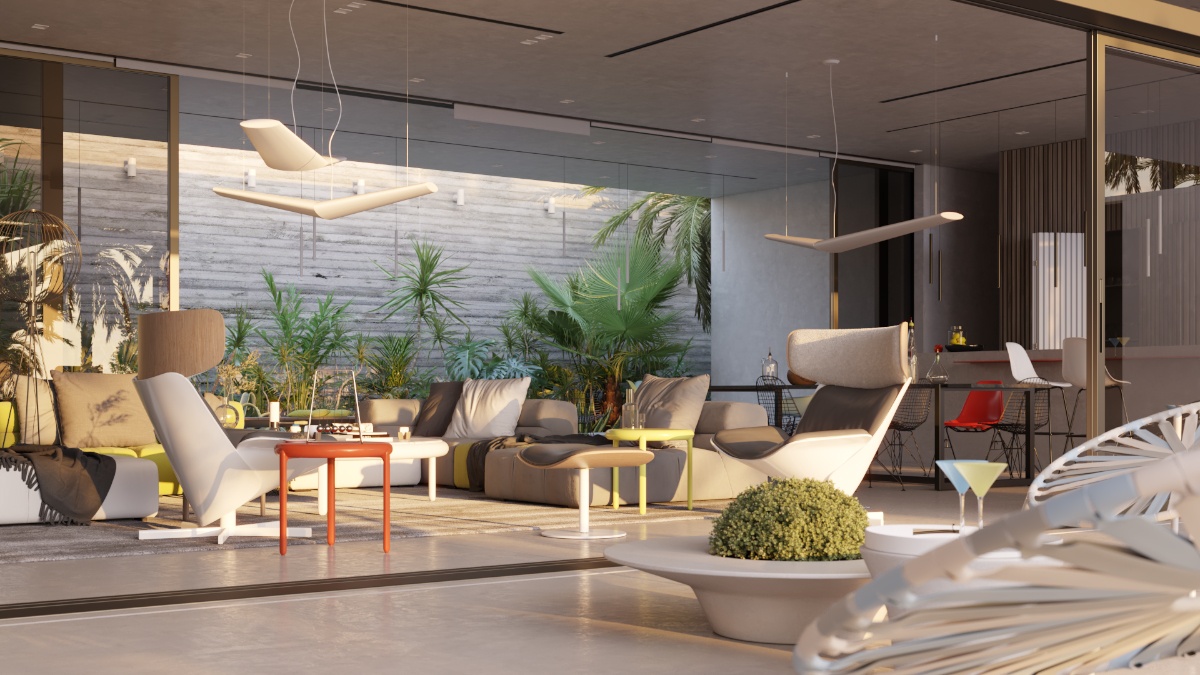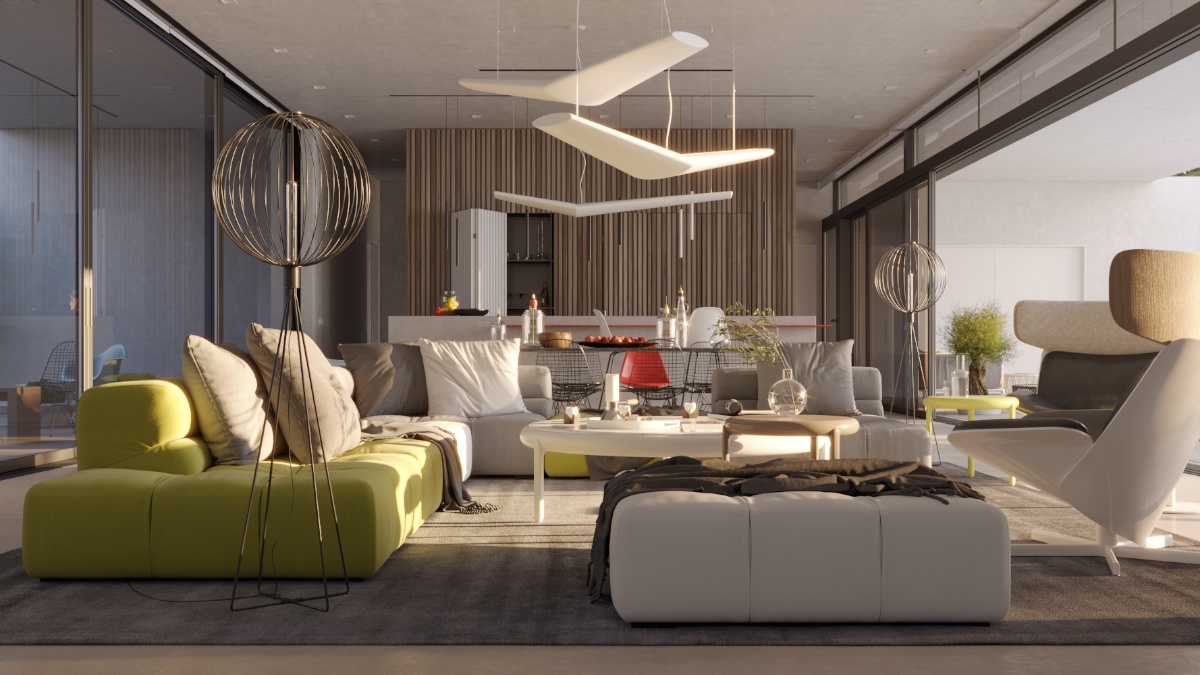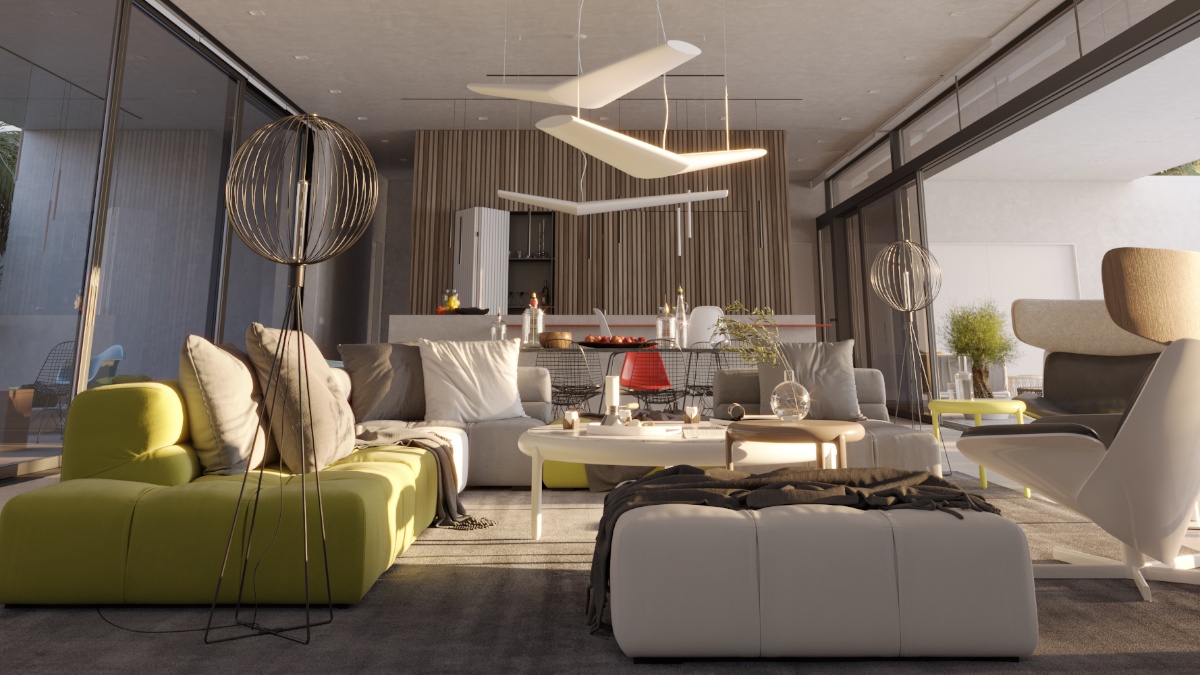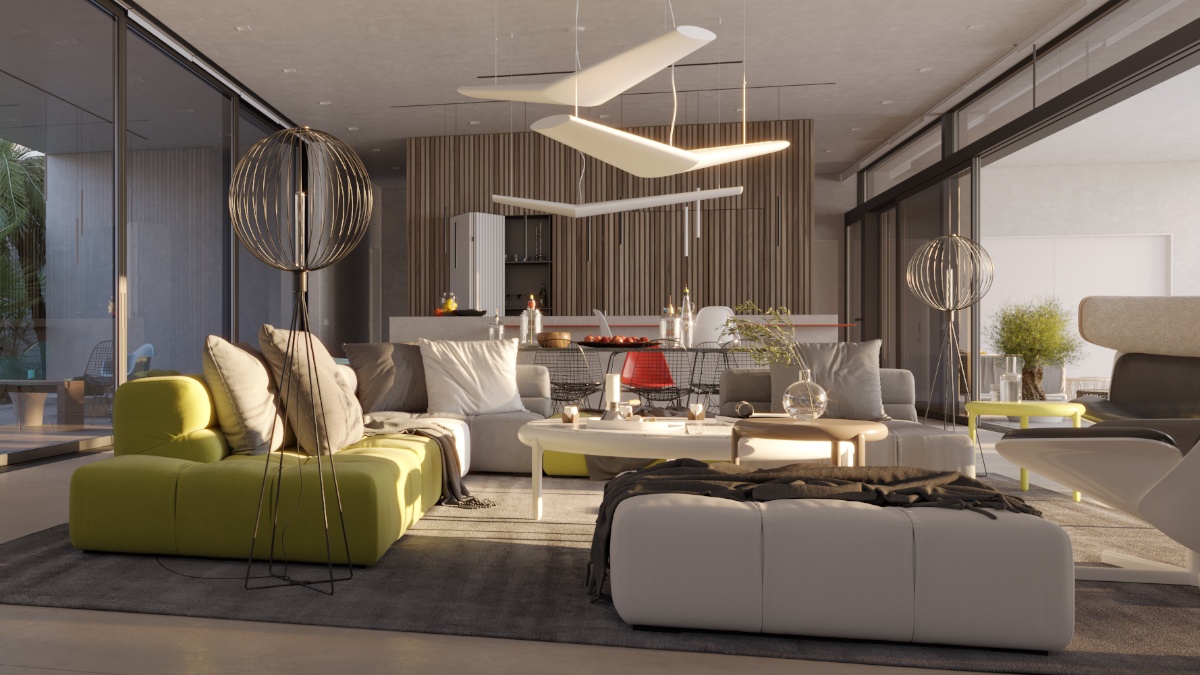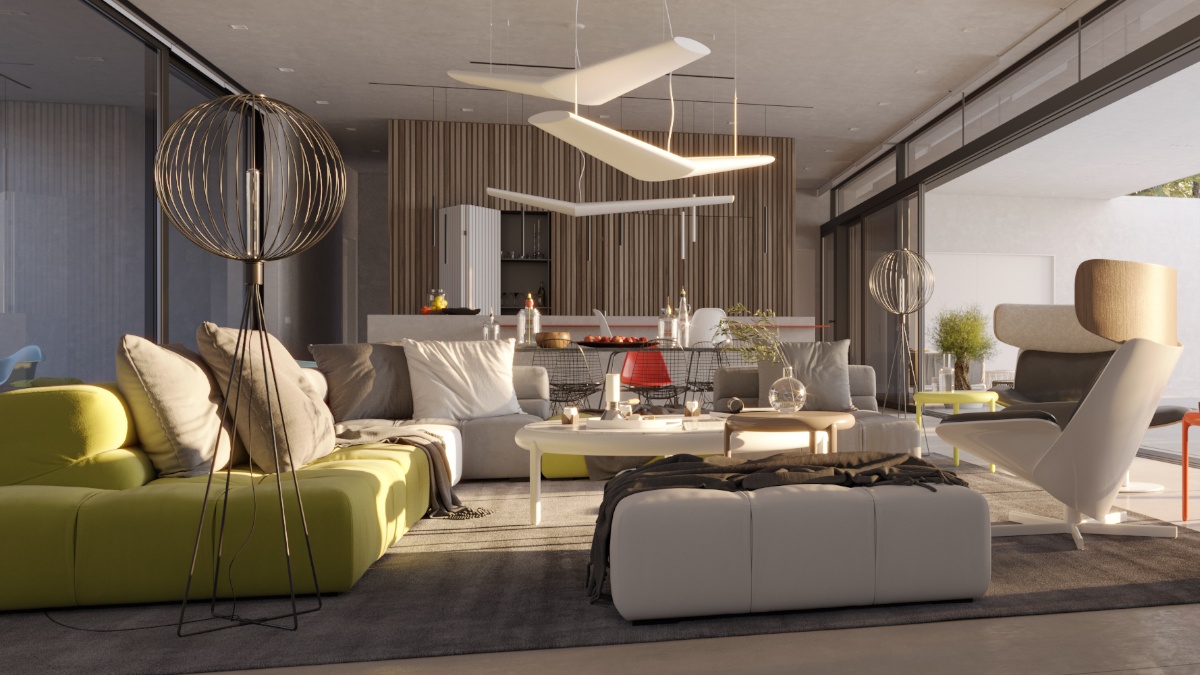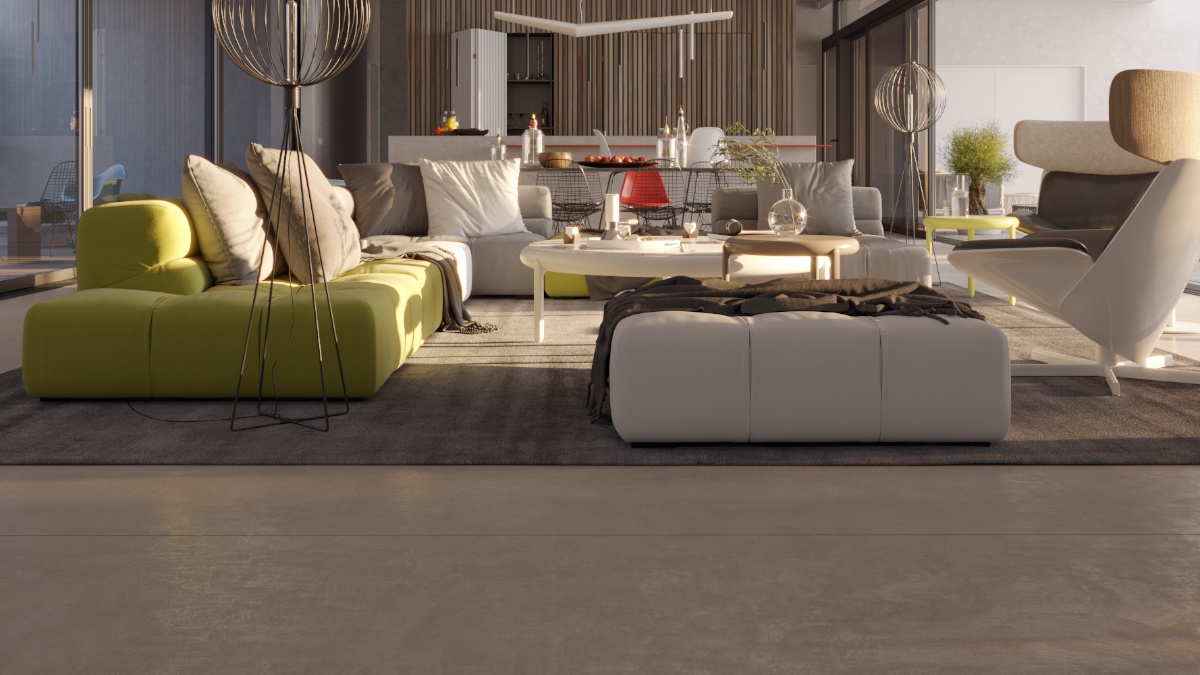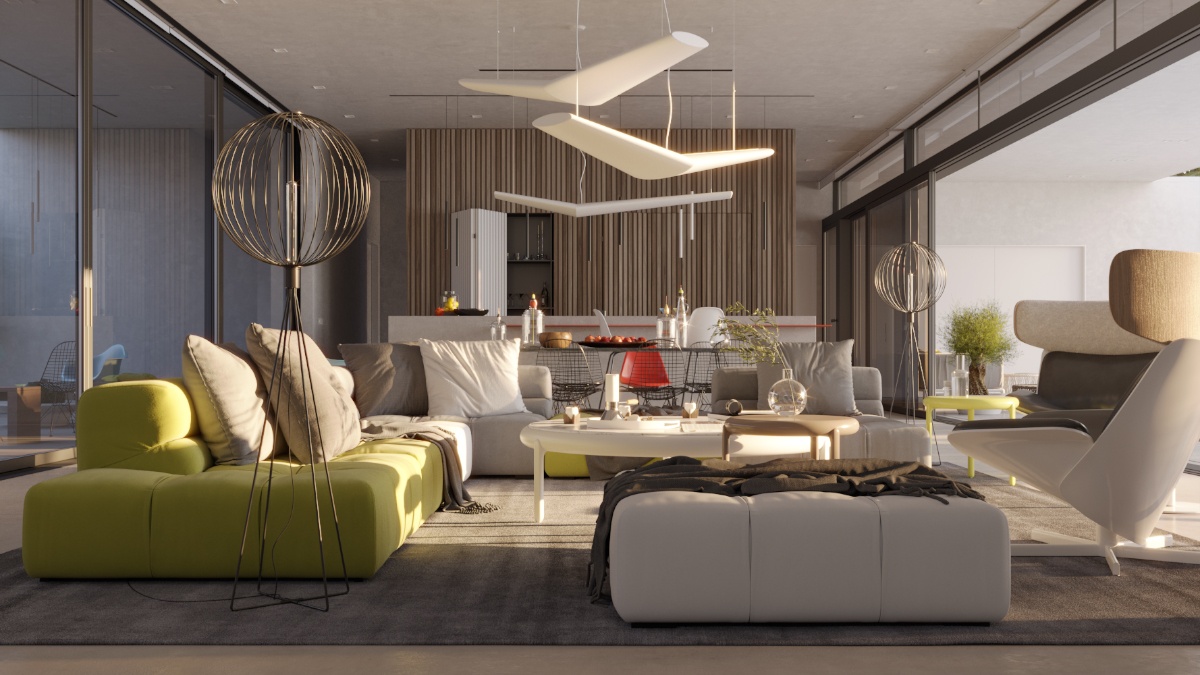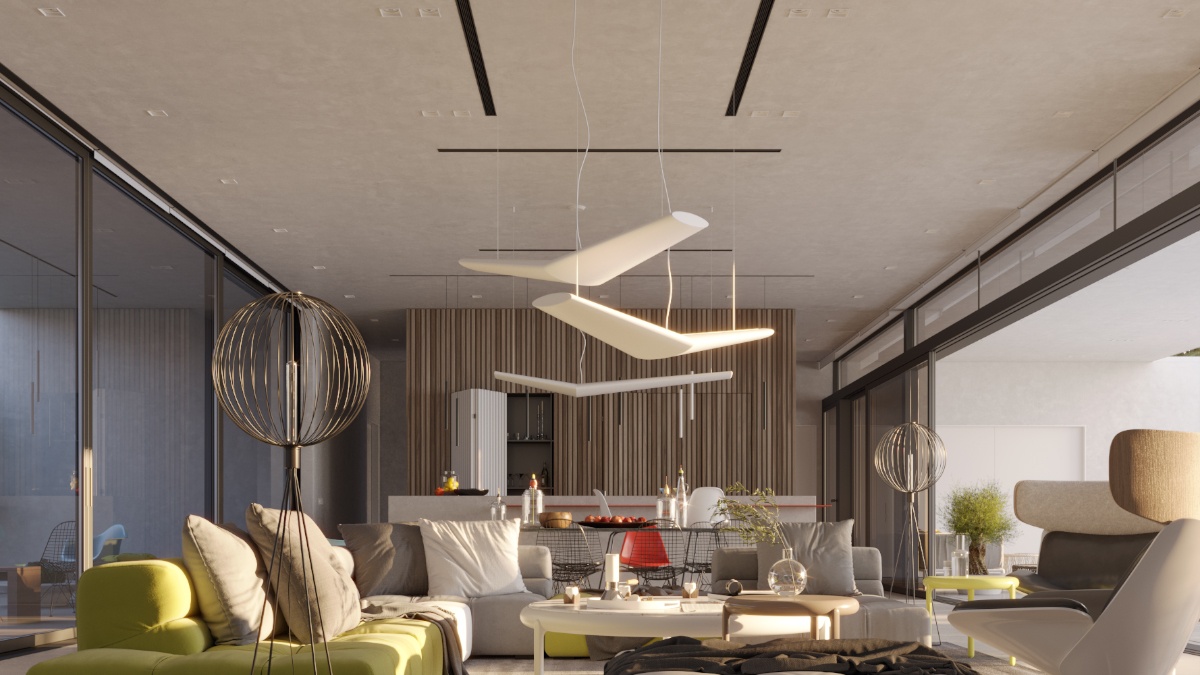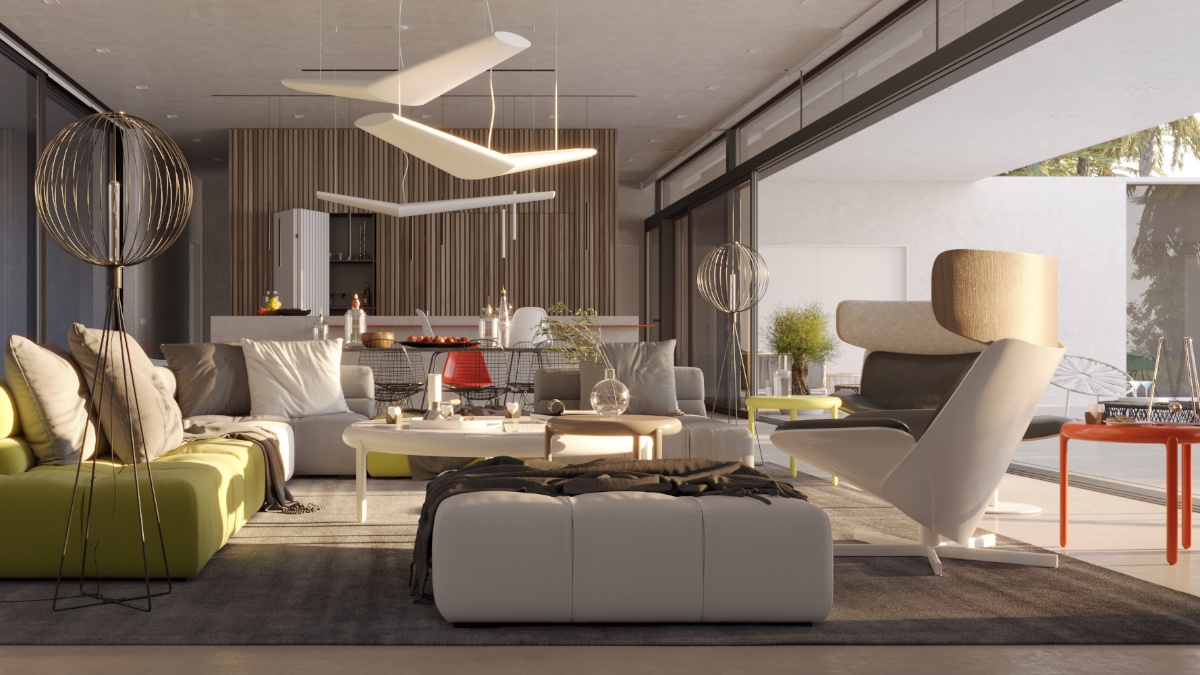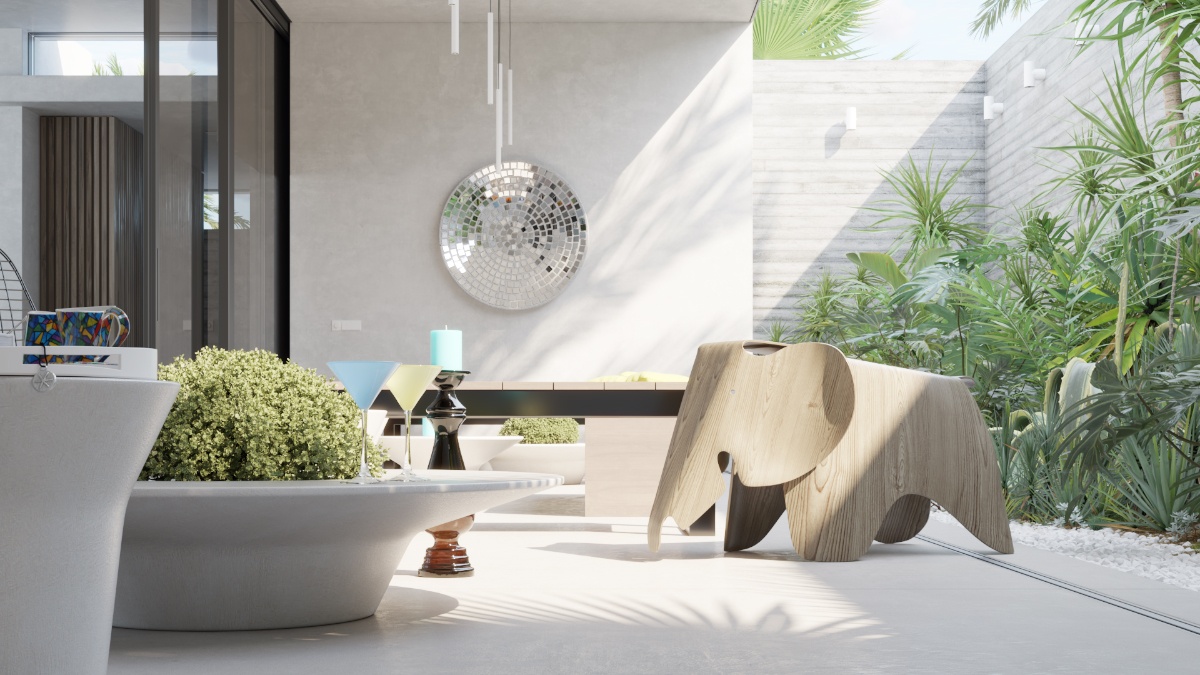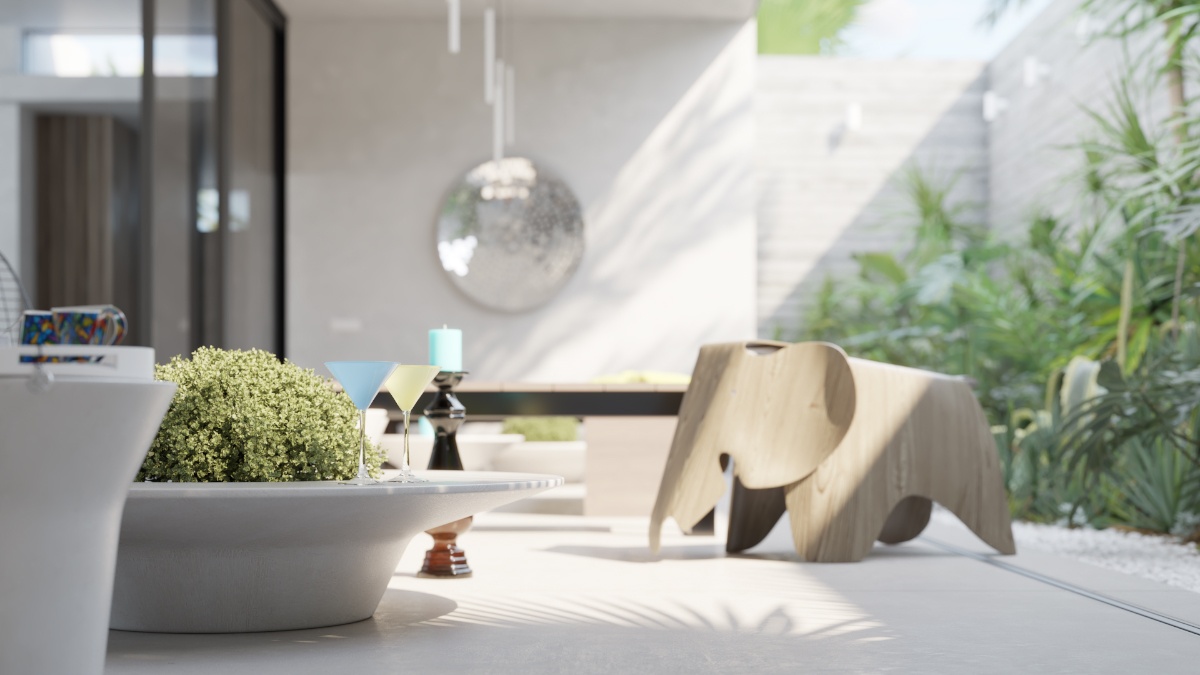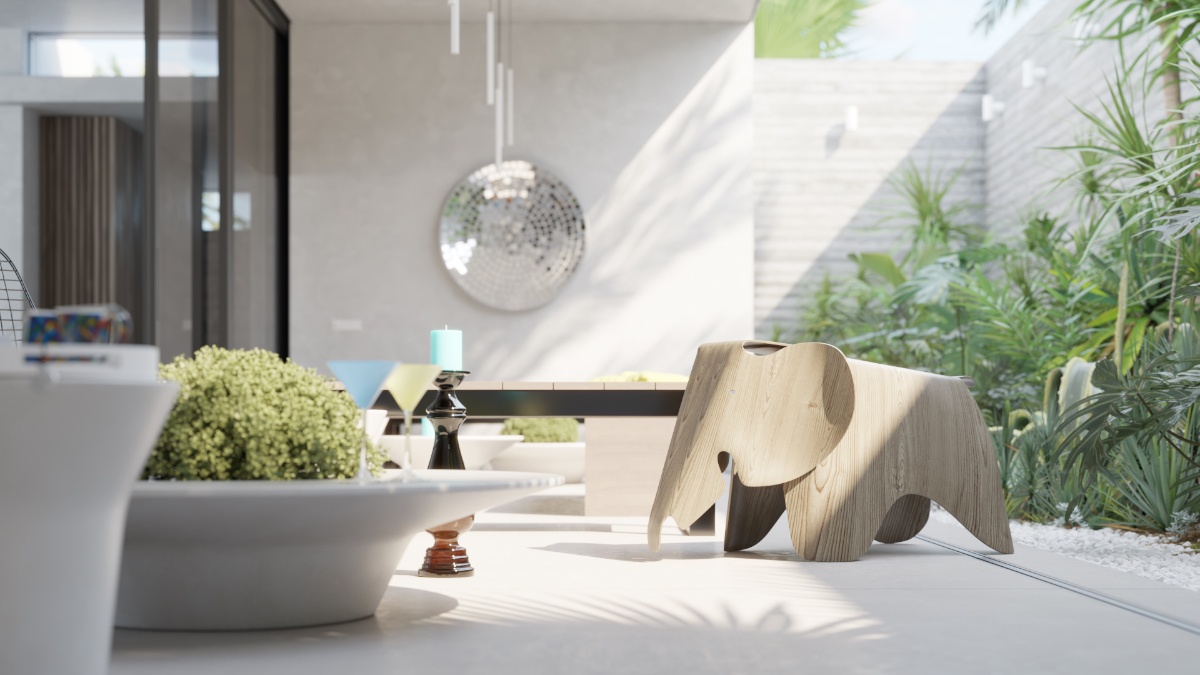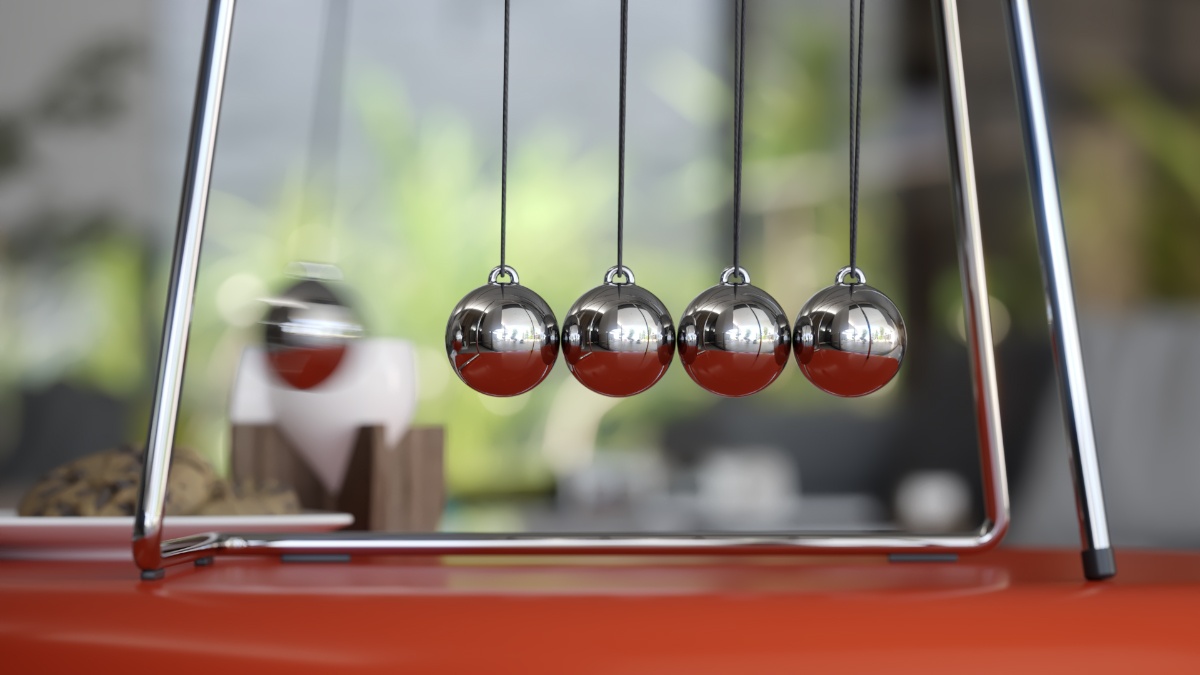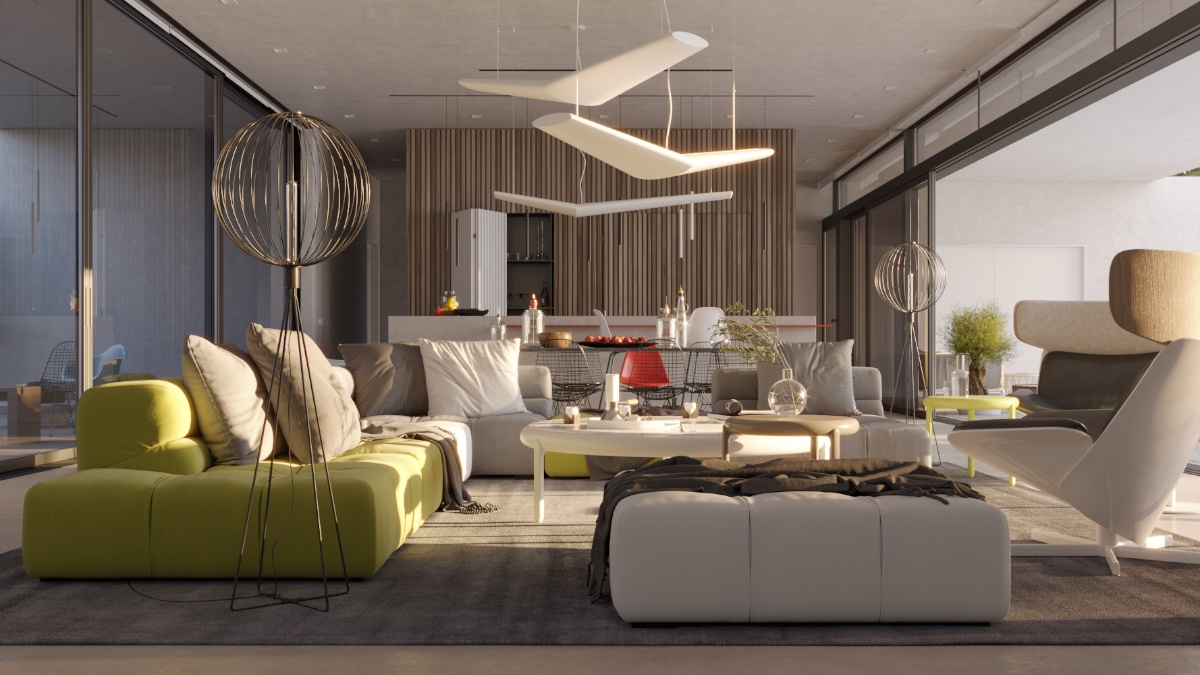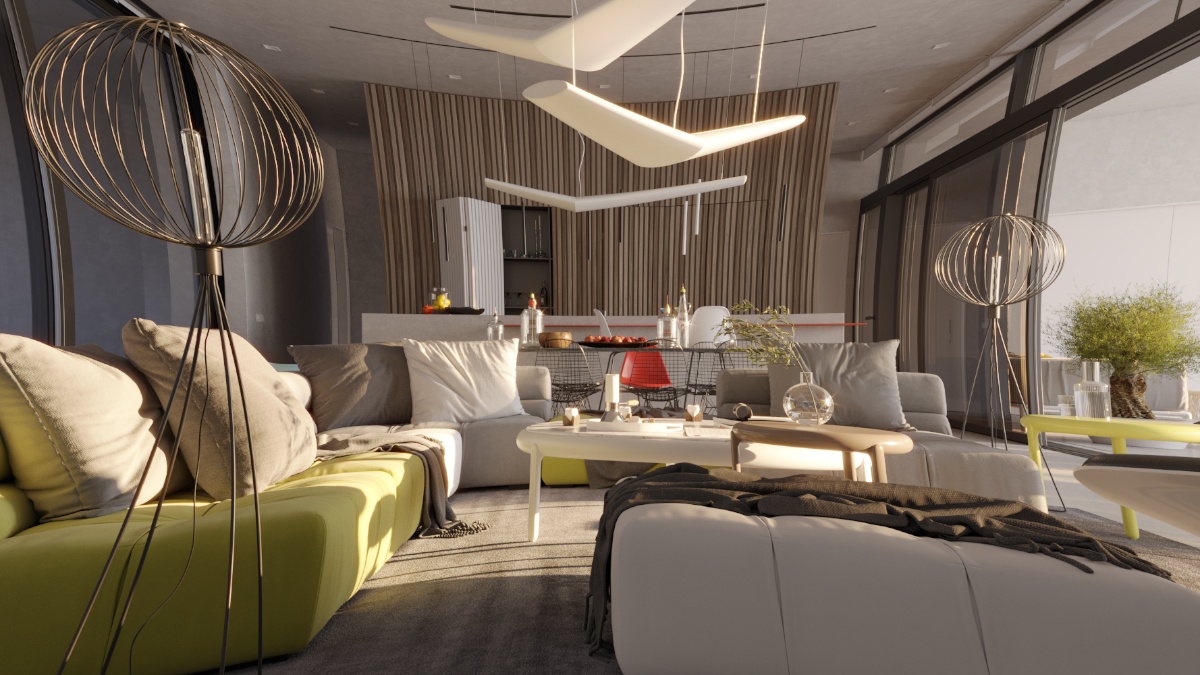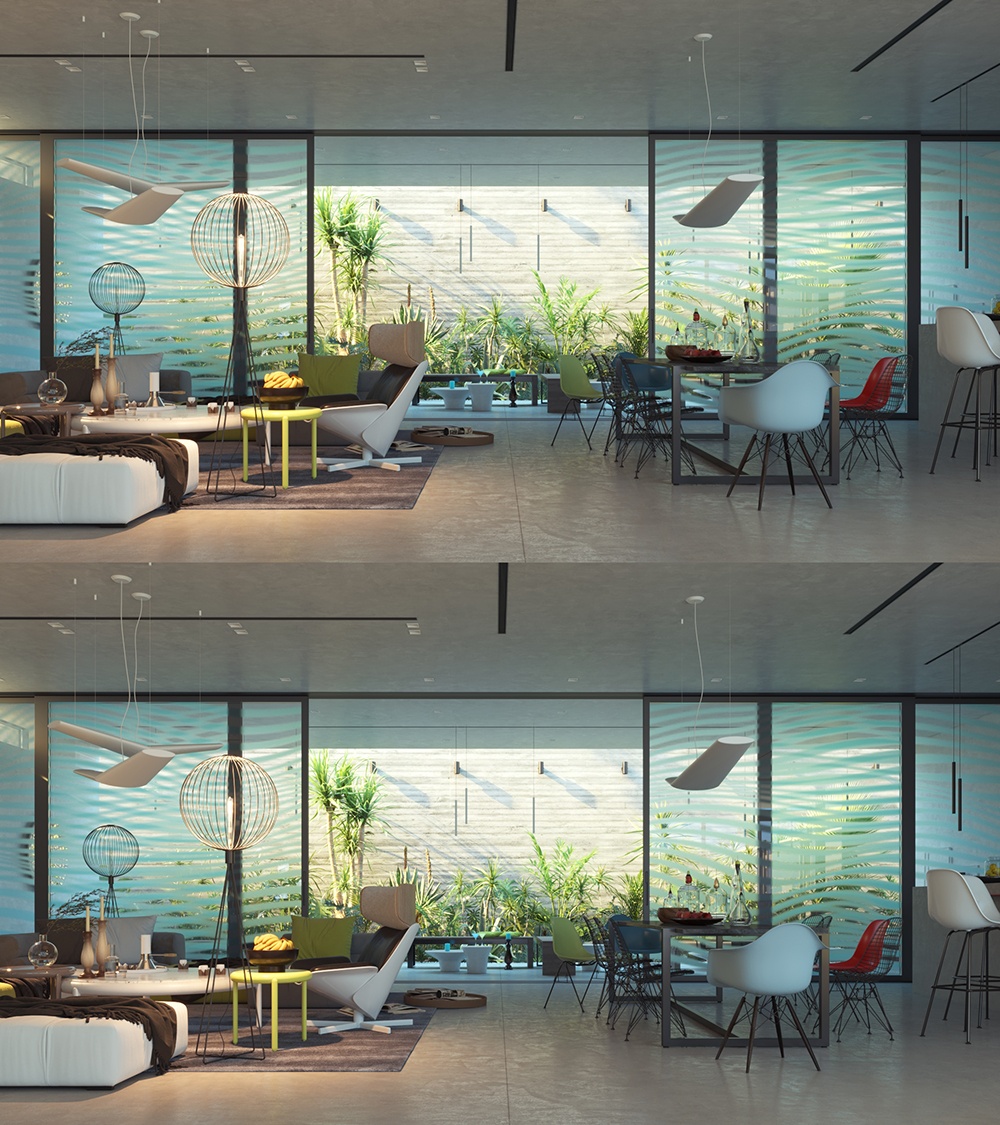This page provides information on the Physical camera attributes.
Overview
The V-Ray Physical Camera uses real-world camera settings such as f-stop, focal length, and shutter speed to set up the virtual CG camera. It also makes it easier to use light sources with real-world illumination, such as V-Ray Lights with physical units or V-Ray Sun and Sky.
General
Camera
Sensor and Lens
Example: Exposure, Field of View and Focus Distance
The Focus Distance of the Cinema 4D physical camera affects the exposure of the image and the field of view for the camera, especially if the Focus Distance is close to the camera. This is an effect that can be observed with real-world cameras as demonstrated in the images below.
The set up is a white board with a small black rectangle and a camera in front of it. Notice how changing the Focus Distance produces images with different brightness, even though the illumination and all other camera parameters are the same in both cases. Also notice the change in the Field of View.
The camera is focused on the white board; the grey color is approximately RGB 104, 104, 104.
The camera is focused at infinity; the grey color is approximately RGB 135, 135, 135.
Side view of the camera focused at infinity.
Side view of the camera focused on the white board.
Aperture
Aperture F-number vs Shutter Speed vs ISO
Cheat Sheet
The main options that control the brightness of a V-Ray Physical camera are Aperture F-number, Shutter Speed and ISO. They affect each other and you need to balance them according to your scene. Keep in mind that these settings do not correspond to those of a real-life camera. They apply only to the V-Ray Physical camera.
F-number determines the size of the opening in the camera lens. What the number refers to is the ratio between the aperture's focal length and the actual diameter of the aperture. A smaller F-number means a larger aperture. The larger the Aperture, the brighter the scene becomes but that also introduces more Depth of field.
Shutter Speed determines how long the lens stays open when taking the photo. The numbers refer to fractions of a second. The slower the Shutter Speed, the brighter the scene becomes but that also introduces Motion Blur.
ISO determines the camera's sensitivity to light in the scene. Lowering the ISO means that more light is needed to achieve good lighting. Increasing the ISO means that less light is needed to achieve good lighting. A day scene, lit with a V-Ray Sun, for instance, looks best when captured with around 100 ISO.
Color and Exposure
Tilt and Shift
Depth of Field
Bokeh Effects
Motion Blur
Distortion
Auto Exposure
Overrides
Stereo
Examples
Example: Zoom Factor
This parameter determines the zooming (in and out) of the final image. It doesn't move the camera forward nor backwards.
The following constant settings are used for some parameters: Exposure is set to Physical Exposure, Shutter Speed is 250, F-Number is 4.0, Film Speed (ISO) is 100, Vignetting is 1.0, and White Balance is set to white.
Example: Film Speed (ISO)
The Film Speed (ISO) parameter determines the sensitivity of the film and consequently the brightness of the image. If the ISO value is high (film is more sensitive to light), the image is brighter. Lower ISO values mean that the film is less sensitive and produces a darker image.
The images in this example show the effect of changing the Film Speed (ISO). The following constant settings are used for some parameters: Exposure is set to Physical Exposure, Shutter Speed is 125, F-Number is 4.0, Vignetting is 1.0, and White Balance is white.
Example: F-Number
The F-Number parameter controls the aperture size of the virtual camera. Lowering the F-Number value increases the aperture size and so makes the image brighter since more light enters the camera. In reverse, increasing the F-Number makes the image darker, as the aperture is closed. This parameter also determines the amount of the Depth of Field (DOF) effect.
The images in this example show the effect of changing the F-Number. The following constant settings are used for some parameters: Exposure is set to Physical Exposure, Shutter Speed is 125, ISO is 100, Vignetting is 1.0, and White Balance is white.
Example: Shutter Speed
The Shutter Speed (s^-1) parameter determines the exposure time for the virtual camera. The longer this time is (small shutter speed values), the brighter the image is. In reverse - if the exposure time is shorter (high shutter speed value), the image gets darker. This parameter also affects the motion blur effect.
The images in this example show the effect of changing the Shutter Speed (s^-1). The following constant settings are used for some parameters: Exposure is set to Physical Exposure, F-Number is 4.0, ISO is 100, Vignetting is 1.0, and White Balance is white.
Example: Vignetting
This parameter control the optical vignetting effect of real-world cameras. Exposure is set to Physical Exposure, F-Number is 8, Shutter Speed is 60, ISO is 100, Depth of Field is enabled and White Balance is white.
Example: White Balance
Using the White Balance color allows additional modification of the image output. Objects in the scene that have the specified color appear white in the image, e.g. for daylight scenes this should be peach color to compensate for the color of the sun light etc.
The images in this example show the effect of changing the White Balance. The following constant settings are used for some parameters: Exposure is set to Physical Exposure, F-Number is 8, Shutter Speed is 60, ISO is 100, Depth of Field is enabled.
Example: Vertical Tilt
Using this parameter, you can achieve a 2-point perspective. The following constant settings are used for some parameters: Exposure is set to Physical Exposure, F-Number is 4, Shutter Speed is 125, ISO is 100, White Balance is white.
Example: Horizontal Tilt
Using this parameter, you can achieve a 2-point perspective. The following constant settings are used for some parameters: Exposure is set to Physical Exposure, F-Number is 4, Shutter Speed is 125, ISO is 100, White Balance is white.
Example: Vertical Shift
Using this parameter, you can offset the camera Field of View. For the images in this example, the following constant settings are used for some parameters: Exposure is set to Physical Exposure, F-Number is 4, Shutter Speed is 125, ISO is 100, White Balance is white.
Example: Horizontal Shift
Using this parameter, you can offset the camera Field of View. For the images in this example, the following constant settings are used for some parameters: Exposure is set to Physical Exposure, F-Number is 4, Shutter Speed is 125, ISO is 100, White Balance is white.
Example: Depth of Field
To enable the DoF effect you need to turn on the Depth of Field option of the physical camera. The effect is most strongly seen when the camera is close to an object, for example when doing a macro photo. For a strong DoF effect, the camera aperture must be open wide (i.e. small F-Number value). That may lead to a very burnt and bright image, so to preserve the same illuminosity over the whole image, the shutter speed must be shortened. And last but not least, the Focus Distance of the Cinema 4D camera determines which part of the scene is actually on focus. To get the focus near, you would need a small value and inverse - a higher value for far focus.
For the images in this example, the following constant settings are used for some parameters: Exposure is set to Physical Exposure, F-Number is 2.8, Shutter Speed is 250, ISO is 100, Vignetting is 0.0, and White Balance is white.
Example: Motion Blur
To enable the motion blur effect, you need to enable the Motion Blur option of the physical camera. The amount of motion blur is determined by the speed of the moving object itself, as well as the Shutter Speed setting of the camera. Long shutter speeds produce more motion blur, as the movement of the object is tracked over a longer time. In reverse, short shutter speeds produce less motion blur.
For the images in this example, the following constant settings are used for some parameters: Exposure is set to Physical Exposure, Vignetting is 1.0, Depth of Field is on and White Balance is white.
Example: Distortion
The difference between the Cubic and Quadratic types of distortion is slightly visible. The Cubic type should be used in some camera tracking programs like SynthEyes, Boujou, etc. For the images in this example, the following constant settings are used for some parameters: Exposure is set to Physical Exposure, F-Number is 4, Shutter Speed is 125, ISO is 100, White Balance is white.



